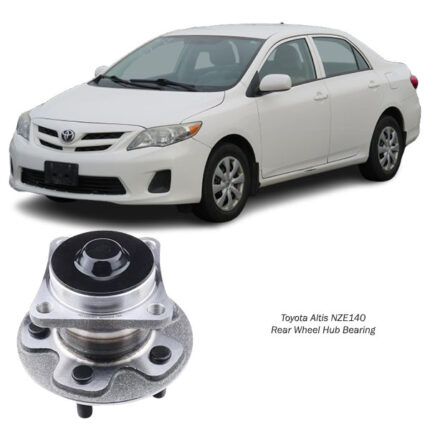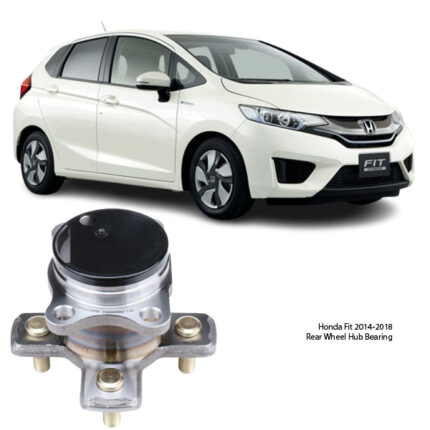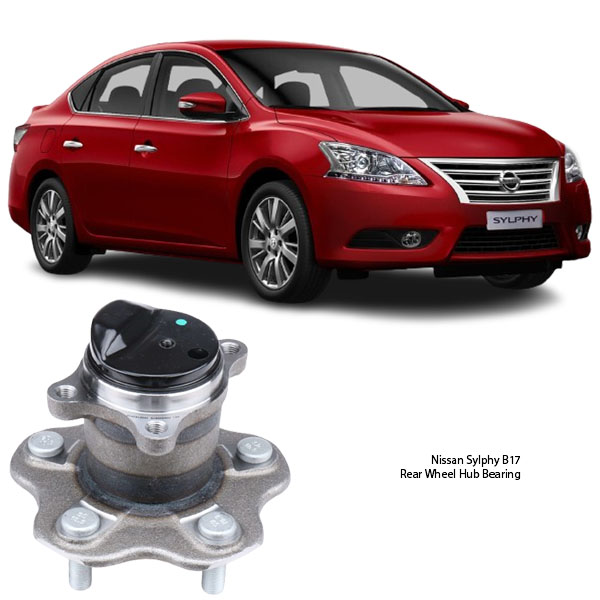-6%
Get Nissan Sylphy B17 Rear Wheel Hub Bearing PHU930870 in Kenya
The rear wheel hub bearing is a crucial component in a vehicle’s drivetrain and suspension system, responsible for ensuring smooth wheel rotation, reducing friction, and supporting the vehicle’s weight. This bearing is housed within the wheel hub assembly and plays a significant role in overall stability, handling, and ride comfort.
In this comprehensive guide, we will explore the functions, types, benefits, symptoms of failure, causes of wear, maintenance tips, and replacement procedures of rear wheel hub bearings.
2. What is a Rear Wheel Hub Bearing?
A wheel hub bearing is a set of steel balls or rollers enclosed in a metal ring that allows the wheel to rotate with minimal friction. In rear-wheel-drive, all-wheel-drive, and four-wheel-drive vehicles, this bearing is especially crucial as it handles both rotational and axial forces.
2.1 Components of a Wheel Hub Bearing
- Outer Race – The stationary outer ring that houses the rolling elements.
- Inner Race – The rotating inner ring connected to the axle shaft.
- Rolling Elements – Either ball bearings or roller bearings, which reduce friction.
- Seal – Protects the bearing from contaminants like dirt and moisture.
- Grease – Ensures smooth operation and prevents overheating.
3. Functions of a Rear Wheel Hub Bearing
3.1 Enables Smooth Wheel Rotation
The bearing minimizes friction, allowing the wheel to rotate freely with minimal resistance.
3.2 Supports Vehicle Weight
It bears a portion of the vehicle’s weight and load while ensuring proper wheel alignment.
3.3 Enhances Stability and Steering Response
A functional hub bearing maintains consistent wheel positioning, preventing vibrations or wobbles.
3.4 Reduces Friction and Heat Generation
Lubricated rolling elements within the bearing reduce heat buildup, ensuring longevity.
3.5 Provides a Secure Mounting for the Wheel
The hub bearing keeps the wheel firmly attached to the axle, preventing detachment.
4. Types of Rear Wheel Hub Bearings
4.1 Ball Bearings
- Common in passenger vehicles.
- Consist of spherical balls that reduce friction.
- Suitable for moderate loads and speeds.
4.2 Tapered Roller Bearings
- Used in trucks and heavy-duty vehicles.
- Have conical rollers that support both radial and axial forces.
4.3 Cartridge Bearings
- Pre-assembled and sealed for low maintenance.
- Found in modern vehicles with ABS and electronic sensors.
4.4 Hub Assemblies with Integrated Bearings
- Includes wheel hub, bearing, and mounting flange.
- Simplifies installation but requires complete replacement if damaged.
5. Symptoms of a Failing Rear Wheel Hub Bearing
5.1 Grinding or Humming Noise
- A worn-out bearing produces a grinding, humming, or growling sound, especially at higher speeds.
5.2 Vibrations in the Steering Wheel or Cabin
- Excessive play in the bearing transfers vibrations to the vehicle body.
5.3 Uneven or Rapid Tire Wear
- Misaligned or loose bearings can cause irregular tire wear patterns.
5.4 Loose or Wobbly Wheel
- A severely damaged bearing results in a loose wheel, affecting handling and safety.
5.5 ABS Malfunction Warning Light
- Bearings integrated with ABS sensors can trigger dashboard warnings when faulty.
5.6 Increased Rolling Resistance
- A failing bearing reduces fuel efficiency due to increased friction.
6. Causes of Rear Wheel Hub Bearing Failure
6.1 Contamination from Dirt and Water
- Dirt, moisture, and road salt can penetrate seals, leading to corrosion and damage.
6.2 Lack of Lubrication
- Insufficient or degraded grease causes excessive friction and overheating.
6.3 Overloading the Vehicle
- Carrying excess weight accelerates wear on the bearings.
6.4 Improper Installation
- Over-tightening or misaligning the bearing can cause premature failure.
6.5 Driving on Rough Terrain
- Potholes, unpaved roads, and excessive shock loads damage the bearing structure.
7. Maintenance Tips for Rear Wheel Hub Bearings
7.1 Regular Inspections
- Check for unusual noises, excessive play, or uneven tire wear every 20,000 – 30,000 km.
7.2 Clean & Protect Bearings
- Avoid driving through deep water and keep the bearing area clean.
7.3 Use High-Quality Bearings
- Opt for OEM-grade or high-performance bearings to ensure durability.
7.4 Apply Proper Torque During Installation
- Follow manufacturer torque specifications to prevent premature failure.
7.5 Replace in Pairs
- If one bearing is failing, it’s best to replace both rear wheel bearings for balanced performance.
8. Replacing a Rear Wheel Hub Bearing
8.1 Tools Required
- Jack & Jack Stands
- Socket Wrench Set
- Torque Wrench
- Bearing Puller Kit
- Hammer & Pry Bar
8.2 Step-by-Step Replacement
Step 1: Lift the Vehicle
- Secure the car on jack stands and remove the rear wheel.
Step 2: Remove the Brake Components
- Detach the brake caliper, rotor, and dust shield.
Step 3: Unbolt the Wheel Hub Assembly
- Locate and remove the hub bolts securing the bearing.
Step 4: Extract the Old Bearing
- Use a bearing puller to remove the damaged hub bearing.
Step 5: Install the New Hub Bearing
- Align and press the new bearing into place using a press tool.
Step 6: Reassemble Components
- Secure the hub bolts, brake components, and wheel.
Step 7: Torque to Manufacturer Specifications
- Tighten all bolts to OEM torque settings for safety.
Step 8: Test Drive the Vehicle
- Drive at low and high speeds to ensure smooth operation.
9. Benefits of a New Rear Wheel Hub Bearing
9.1 Smoother Ride Quality
- Eliminates vibrations and reduces road noise.
9.2 Enhanced Handling & Stability
- A properly aligned wheel hub improves steering precision.
9.3 Increased Fuel Efficiency
- Reduced rolling resistance results in better fuel economy.
9.4 Longer Tire Lifespan
- Ensures even tire wear, preventing premature replacements.
9.5 Improved Safety
- A secure wheel hub minimizes risk of wheel detachment.
10. Conclusion
The rear wheel hub bearing is a critical component that enables smooth, stable, and efficient wheel rotation. Regular inspections, proper lubrication, and timely replacements are essential for optimal vehicle performance and safety. Whether you choose OEM bearings for standard use or performance-grade bearings for durability, maintaining a functional wheel hub bearing ensures a comfortable and reliable driving experience.
Follow us on Facebook for more parts.



